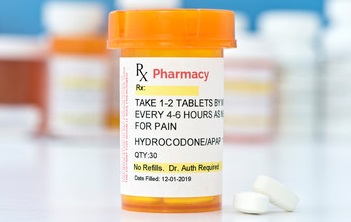Physiologic Changes in Geriatric Patients: A Field Guide for EMTs
Introduction
Aging is accompanied by normal physiologic changes that affect how older adults respond to illness, injury, and stress. For Emergency Medical Technicians (EMTs), understanding these changes is crucial for accurate assessment, timely intervention, and safe transport. Subtle signs in geriatric patients may indicate serious emergencies, so field providers must recognize what is “normal aging” versus pathologic.
1. Cardiovascular System
Changes with aging:
- Decreased elasticity of blood vessels → increased systolic blood pressure.
- Reduced maximum heart rate and cardiac output.
- Stiffened heart valves, contributing to diastolic dysfunction.
Field implications:
- Older adults may not mount a typical tachycardic response to shock.
- Hypotension or syncope may be the only sign of significant illness.
- Palpitations, fatigue, or subtle chest discomfort may indicate cardiac ischemia.
2. Respiratory System
Changes with aging:
- Decreased lung elasticity and chest wall compliance.
- Reduced alveolar surface area → lower oxygen exchange.
- Weakened respiratory muscles → decreased cough strength.
Field implications:
- Shortness of breath may develop quickly with minor stressors.
- Cough may be less effective, increasing risk of pneumonia.
- SpO₂ may drop faster than in younger adults during respiratory compromise.
3. Renal System
Changes with aging:
- Decline in glomerular filtration rate (GFR).
- Reduced ability to concentrate urine → higher risk of dehydration.
- Impaired drug clearance → increased sensitivity to medications.
Field implications:
- Dehydration may present with confusion, weakness, or hypotension.
- Older adults are more susceptible to electrolyte imbalances.
- Polypharmacy risks are magnified; medication effects may be prolonged or exaggerated.
4. Nervous System
Changes with aging:
- Loss of neurons and decreased neurotransmitter levels.
- Slower reflexes and reaction times.
- Reduced sensory perception: vision, hearing, and touch.
Field implications:
- Altered mental status may be subtle; delirium is common during illness.
- Falls are more likely due to slower balance responses and decreased proprioception.
- Patients may not report pain normally; “silent” myocardial infarctions or infections are more common.
5. Musculoskeletal System
Changes with aging:
- Loss of muscle mass and strength (sarcopenia).
- Reduced bone density → increased fracture risk.
- Joint stiffness and reduced range of motion.
Field implications:
- Even minor trauma may result in fractures or dislocations.
- Mobility limitations may complicate safe patient handling and transport.
- Pain management must consider renal and cardiovascular changes affecting drug choice.
Clinical Takeaways for EMTs
Understanding these age-related physiologic changes helps EMTs:
- Recognize subtle signs of critical illness.
- Adjust vital sign interpretation based on expected age-related norms.
- Communicate effectively with older patients who may have sensory or cognitive limitations.
- Provide safer transport with awareness of frailty, fall risk, and decreased physiologic reserve.
Tip: Always consider baseline functional status, living environment, and medication history when assessing older adults.
Summary
Older adults are not just “older versions” of younger patients—their bodies respond differently to stress, injury, and illness. EMTs who understand these physiologic changes are better equipped to identify emergencies early, prioritize interventions, and communicate effectively with both patients and receiving facilities.
Call to Action
Enhance your skills in geriatric assessment and emergency care with Pedagogy Continuing Nurse Education’s EMS and nursing courses. Learn to recognize subtle signs, adjust treatments, and improve outcomes for older adults in the field.
👉 Visit: PedagogyEducation.com
References
- American College of Emergency Physicians (ACEP). Geriatric Emergency Department Guidelines. Annals of Emergency Medicine, 2023.
- National Institute on Aging. Age-Related Changes in the Body. U.S. Department of Health and Human Services, 2024.
- Sanders, M. Mosby’s Paramedic Textbook, 5th Edition. Elsevier, 2022.
- Tintinalli, J. E., et al. Tintinalli’s Emergency Medicine: A Comprehensive Study Guide, 9th Edition. McGraw-Hill Education, 2020.
- American Geriatrics Society. Physiologic Changes with Aging. Journal of the American Geriatrics Society, 2022.
- National Institute for Health and Care Excellence (NICE). Care of Older Adults in the Emergency Setting. NICE Clinical Guidelines, 2023.

